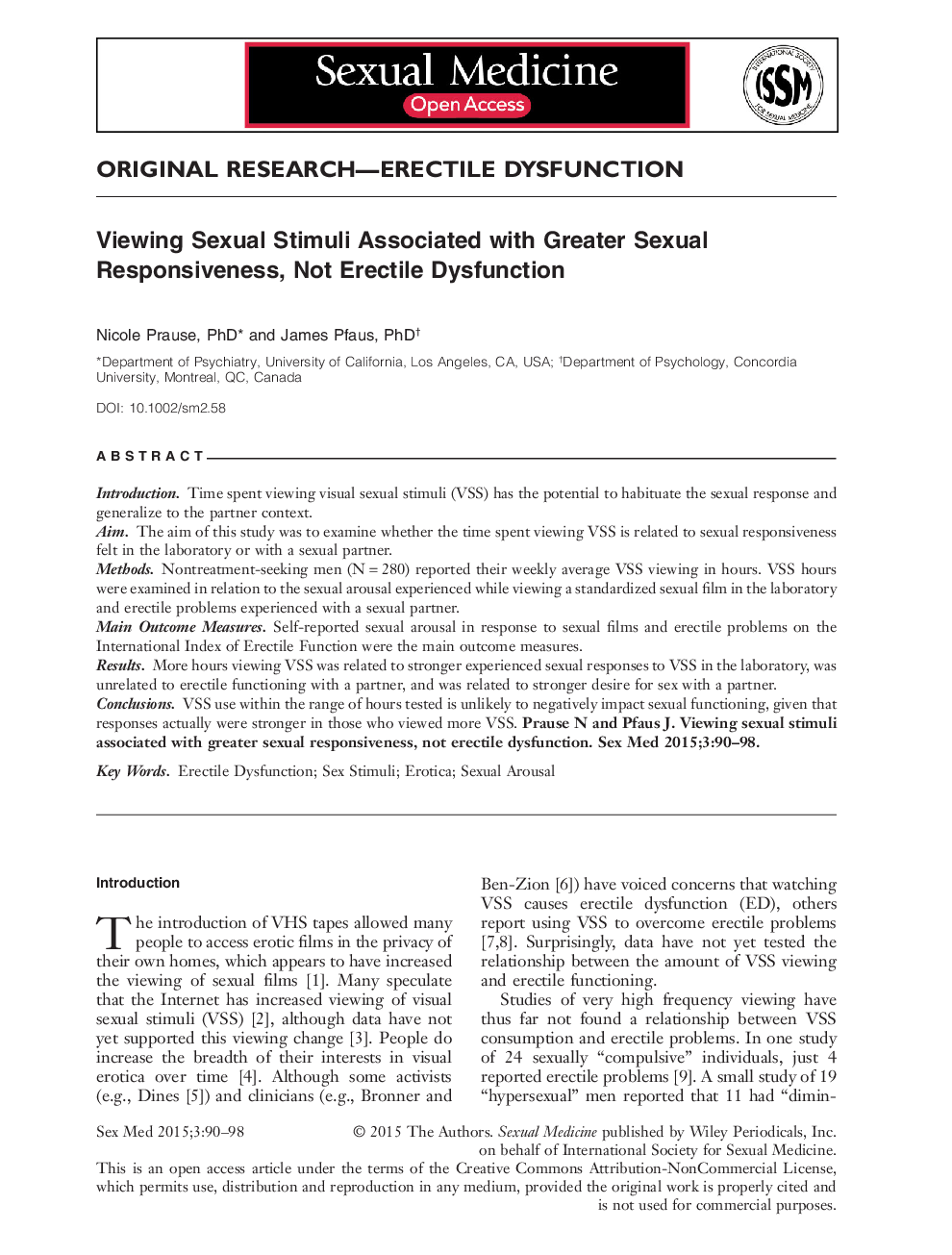| Article ID | Journal | Published Year | Pages | File Type |
|---|---|---|---|---|
| 4274599 | Sexual Medicine | 2015 | 9 Pages |
IntroductionTime spent viewing visual sexual stimuli (VSS) has the potential to habituate the sexual response and generalize to the partner context.AimThe aim of this study was to examine whether the time spent viewing VSS is related to sexual responsiveness felt in the laboratory or with a sexual partner.MethodsNontreatment-seeking men (N = 280) reported their weekly average VSS viewing in hours. VSS hours were examined in relation to the sexual arousal experienced while viewing a standardized sexual film in the laboratory and erectile problems experienced with a sexual partner.Main Outcome MeasuresSelf-reported sexual arousal in response to sexual films and erectile problems on the International Index of Erectile Function were the main outcome measures.ResultsMore hours viewing VSS was related to stronger experienced sexual responses to VSS in the laboratory, was unrelated to erectile functioning with a partner, and was related to stronger desire for sex with a partner.ConclusionsVSS use within the range of hours tested is unlikely to negatively impact sexual functioning, given that responses actually were stronger in those who viewed more VSS. Prause N and Pfaus J. Viewing sexual stimuli associated with greater sexual responsiveness, not erectile dysfunction. Sex Med 2015;3:90–98.
